Terraforming Mars: Can We Turn the Red Planet Into a Second Earth?
Terraforming Mars: The Audacious Dream of a Second Earth
Published on: May 20, 2025 | Author: Science by Rao
Introduction: Beyond Exploration, Towards Transformation
For generations, Mars, the rusty jewel of our solar system, has been a beacon of exploration. But the ambitions of spacefaring civilizations are evolving. The latest frontier isn't just planting flags; it's about something far more profound: transforming an entire planet. Terraforming Mars – the grand endeavor to alter its hostile environment into one capable of supporting Earth-like life – is no longer confined to science fiction. But what colossal challenges lie ahead, and is this interplanetary alchemy truly within our grasp?

Mars: A Barren Landscape Awaiting Transformation
Why Embark on the Herculean Task of Terraforming Mars?
- A Vital Backup for Humanity: In an era of increasing environmental concerns on Earth and the ever-present threat of existential risks, establishing a self-sustaining second home on Mars offers a crucial insurance policy for the survival of our species.
- Pushing the Boundaries of Scientific Understanding: Attempting to terraform Mars represents an unprecedented scientific undertaking. It would force us to master planetary engineering on a scale never before imagined, yielding invaluable knowledge about climate science, atmospheric dynamics, and the potential for life beyond Earth.
- A Catalyst for Unprecedented Innovation: The sheer complexity of terraforming Mars will necessitate breakthroughs across numerous technological domains, including sustainable energy generation (potentially nuclear fusion), advanced artificial intelligence for autonomous systems, sophisticated robotics for large-scale construction, and closed-loop life support systems.
The Immense Obstacles: Confronting the Martian Reality
- The Razor-Thin Atmosphere: Mars' atmosphere is a mere whisper compared to Earth's, possessing less than 1% of our planet's atmospheric pressure. This provides virtually no protection from solar and cosmic radiation and contributes significantly to the planet's frigid temperatures.
- The Absence of a Global Magnetic Shield: Earth's magnetic field deflects harmful charged particles from the Sun. Mars, however, lost its global magnetic field billions of years ago, leaving its surface exposed to high levels of radiation, a significant impediment to life as we know it.
- A Frozen Wasteland: The average surface temperature on Mars is a bone-chilling -63°C (-81°F). Liquid water, essential for Earth-like life, cannot persist on the surface under these conditions, existing primarily as ice in the polar caps and subsurface.
- The Scarcity of Accessible Water: While evidence suggests Mars once had significant amounts of liquid water, most of it is now locked away as ice beneath the surface or in the polar ice caps. Accessing and distributing this water in a usable form presents a major engineering challenge.
The Multi-Stage Blueprint: A Potential Pathway to a Greener Mars
- Step 1: Warming the Frozen World: Igniting a Greenhouse Effect
Several ambitious proposals aim to raise Mars' temperature. These include deploying vast arrays of orbiting mirrors to focus sunlight on the surface, releasing potent greenhouse gases (like fluorinated gases) into the atmosphere, or even the controversial idea of using controlled nuclear explosions to liberate trapped carbon dioxide from the polar ice caps and regolith.
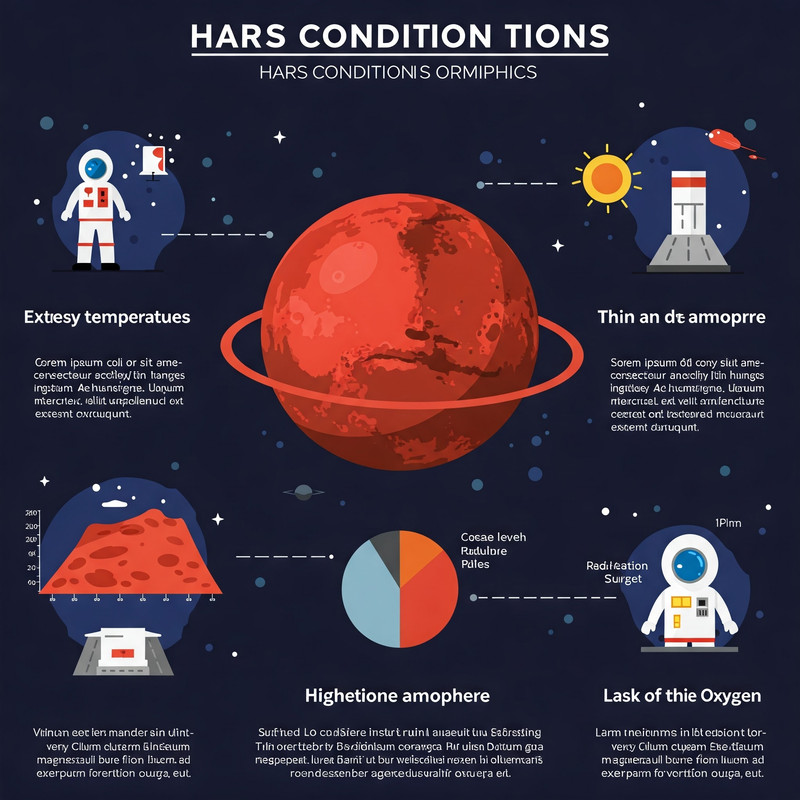
Harnessing Solar Power: Orbital Mirrors Warming the Martian Surface
- Step 2: Building a Breathable Sky: Creating a Thicker Atmosphere
As the planet warms and carbon dioxide is released, the atmospheric pressure would theoretically increase. A denser atmosphere would trap more heat, potentially allowing liquid water to exist on the surface for longer periods and offering some initial protection from radiation.
- Step 3: Unleashing the Water: From Ice to Flowing Rivers?
Introducing significant amounts of liquid water is crucial. Strategies include melting the existing ice caps through warming, redirecting asteroids or comets rich in water ice to collide with Mars, or developing large-scale water extraction and distribution systems from subsurface ice reservoirs.
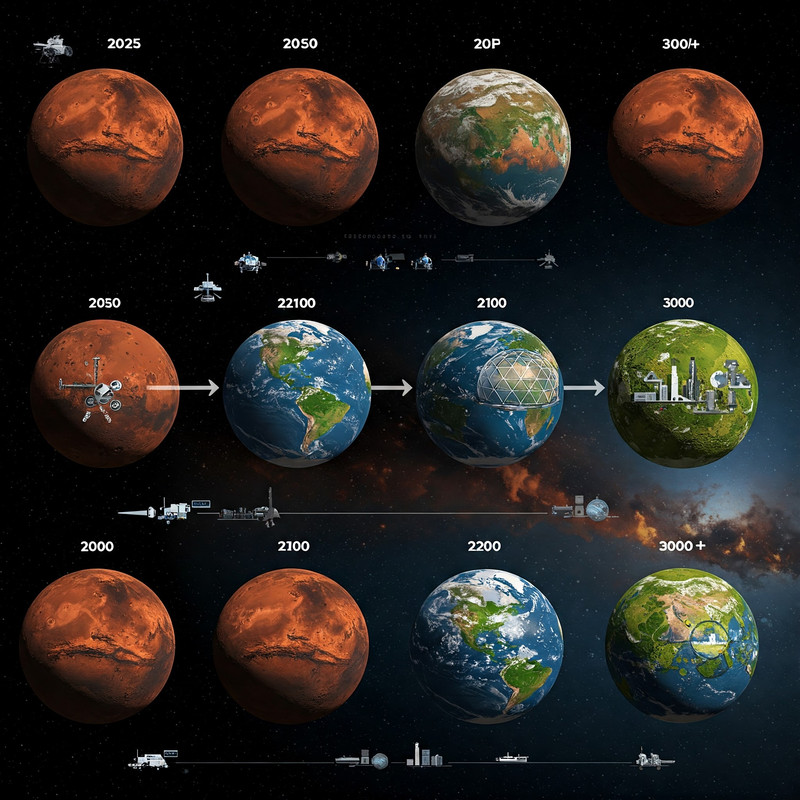
The Flow of Life: Envisioning Water on a Greening Mars
- Step 4: Shielding the Planet: Recreating a Magnetosphere
Protecting the future Martian biosphere from harmful solar and cosmic radiation is paramount. One intriguing proposal involves placing a massive artificial magnetic shield at Mars’ Lagrange Point 1 (L1), a gravitationally stable point between Mars and the Sun, to deflect charged particles.
- Step 5: The Dawn of Life: Seeding and Oxygenating the Environment
Once the atmosphere is thicker and warmer, and liquid water is present, the introduction of extremophile microorganisms and specially engineered plants capable of surviving in low-oxygen environments would be the next step. These pioneer life forms would begin the slow process of photosynthesis, gradually increasing the oxygen content of the atmosphere.
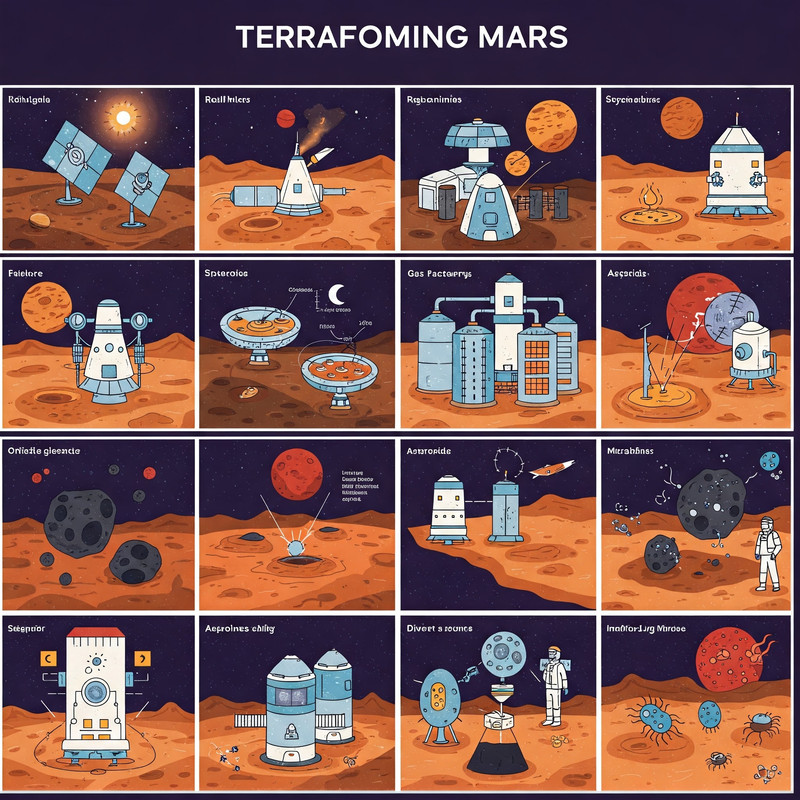
The First Green Shoots: Controlled Agriculture in Martian Domes
Current Strides: Laying the Foundation for Interplanetary Engineering
While the full-scale terraforming of Mars remains a distant aspiration, significant research and development are underway in crucial enabling technologies. Space agencies and private companies are actively experimenting with:
- Advanced Artificial Intelligence: Developing sophisticated AI algorithms for complex climate modeling, predictive simulations of Martian environments, and autonomous management of resources and logistics on an alien planet.
- Nuclear Fusion Energy: Investing in research towards safe and efficient nuclear fusion reactors that could provide the immense energy required for large-scale terraforming operations.
- Autonomous Robotics and Construction: Designing and testing robots capable of operating autonomously in the harsh Martian environment for construction, resource extraction, and infrastructure development.
- Closed-Loop Life Support Systems: Developing sustainable systems for recycling air, water, and nutrients, essential for establishing long-term human presence and eventually a self-sustaining biosphere.
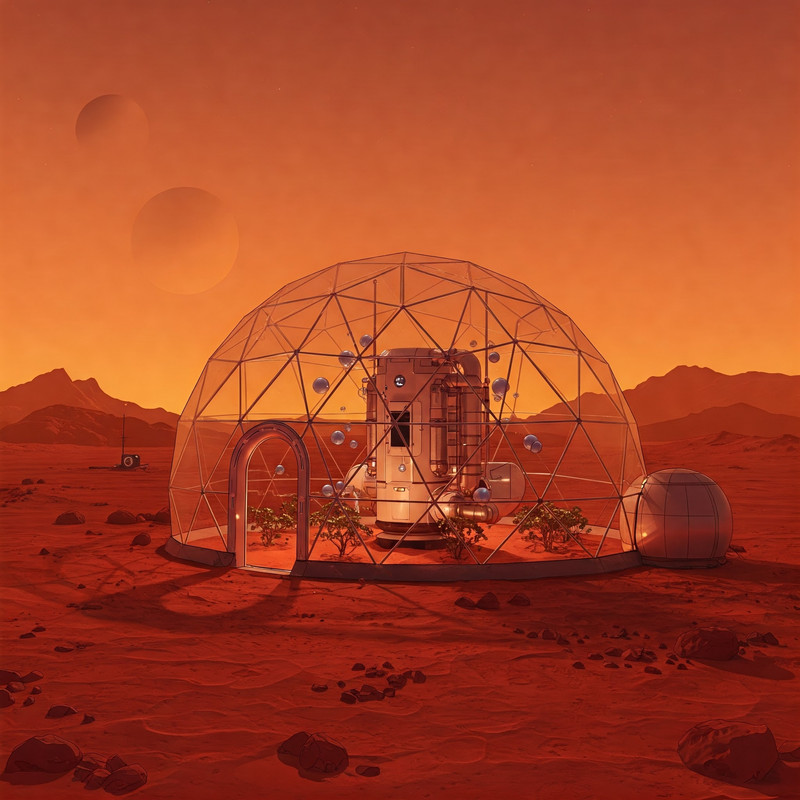
The Terraforming Workforce: Autonomous Robotic Units in Action
The Indispensable Role of AI in Reshaping Mars
- Precision Climate Modeling and Predictive Simulations: AI algorithms can analyze vast datasets of Martian climate information to create highly accurate models and predict the long-term effects of various terraforming interventions.
- Autonomous Resource and Logistics Management: On a planet as resource-constrained as early Mars, AI will be crucial for efficiently managing добыча ресурсов, строительство инфраструктуры, и распределение припасов (resource extraction, infrastructure construction, and supply distribution).
- Automated Terraforming Machinery for Planetary-Scale Operations: AI-powered robots and autonomous machines will be essential for executing the large-scale tasks involved in terraforming, from deploying mirrors to constructing habitats and managing atmospheric modification processes.
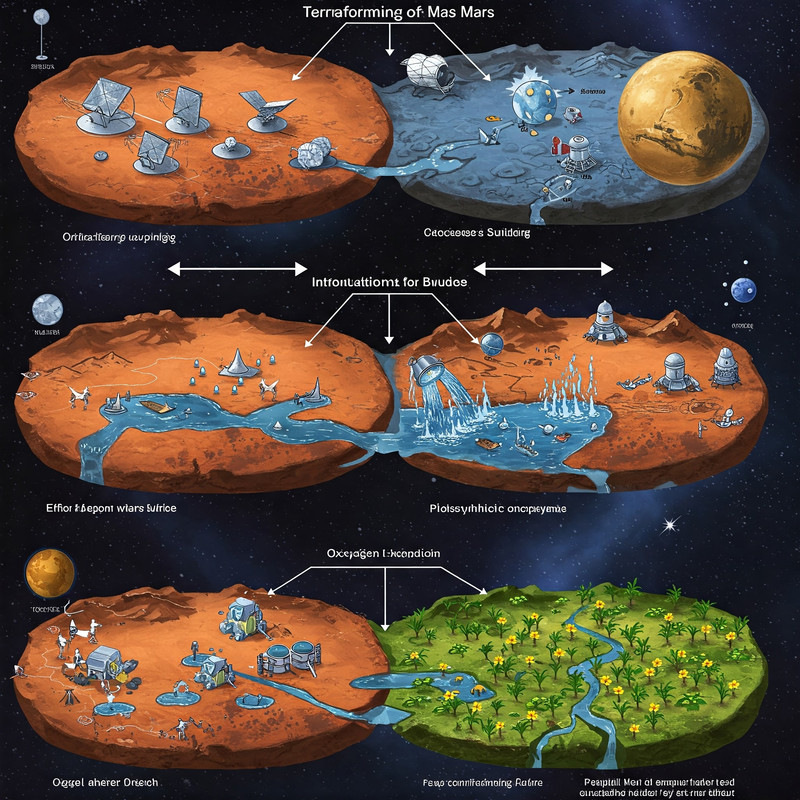
AI-Driven Colonization: Autonomous Habitat Deployment
Mars Terraforming: A Vision of Transformation
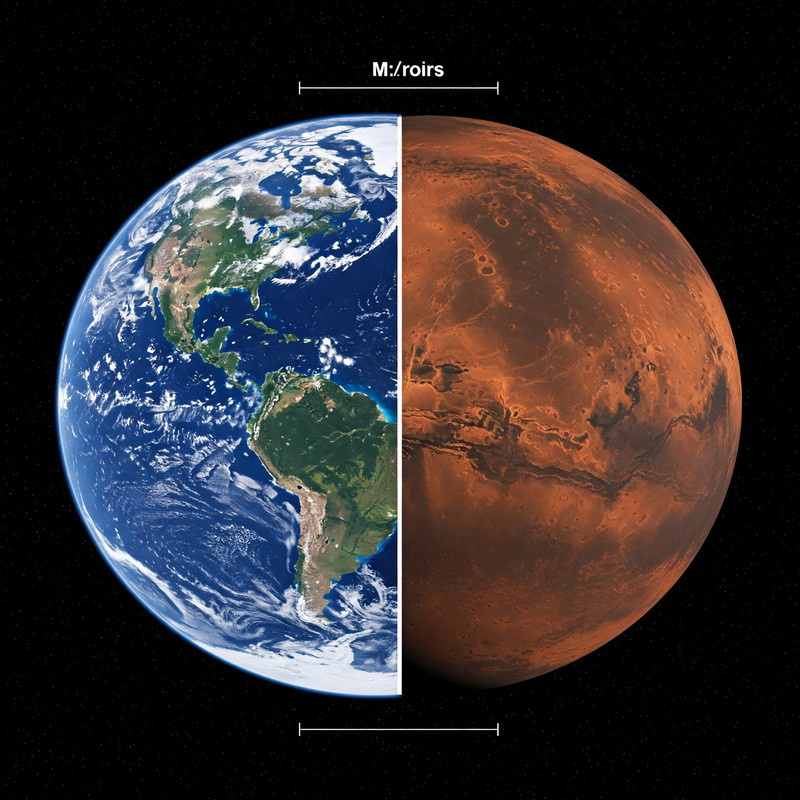
A Glimpse of a Greener Future: Concept of a Partially Terraformed Mars
Conclusion: A Long Journey Towards a Second Pale Blue Dot
Terraforming Mars stands as one of the most audacious and long-term projects humanity has ever conceived. It is not a venture for the near future, but the groundbreaking research, innovative technologies, and unwavering ambition being cultivated today are steadily laying the scientific and engineering foundations for a potential multi-planetary future. The dream of turning the Red Planet green is a testament to our boundless curiosity and our relentless drive to explore and, perhaps one day, call another world home.
Explore More Cosmic Wonders:
- The Future of Nuclear Fusion: Unlimited Clean Energy?
- AI Weather Control: Can We Predict the Unpredictable?
Follow and Connect:
Stay updated by clicking the follow button on the sidebar!
Privacy Policy | Disclaimer | About the Author
Comments
Post a Comment